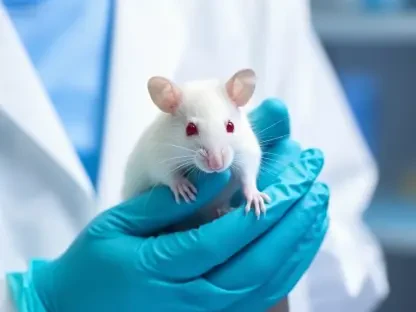Hundreds of employees at the National Institutes of Health (NIH) have openly protested against recent policy changes enacted by the current administration. These alterations, which threaten to undermine the NIH’s standing as a leading public funder of biomedical research, have spurred significant concerns within the scientific community. The protest was marked by a detailed letter, signed by over 300 past and present staff, directed to the NIH’s director, Jay Bhattacharya. The letter raised alarm over the termination of critical research grants, the firing of valued NIH personnel, dwindling support for emerging scientists, and extensive cuts to international research collaborations. These changes have sparked intense debates about their potential impact on efforts to combat rare cancers and infectious diseases.
Resolution of Funding Cuts
The Impact on Biomedical Research
The administration’s proposal to slash the NIH’s budget by 40% has left workers fearing dire consequences for the future of biomedical research. The cuts not only threaten the agency’s international research collaborations but also impede studies aimed at understanding and curing rare cancers and infectious diseases. This reduction places young scientists at a distinct disadvantage, limiting opportunities for foundational research. The scientific community argues such cuts could halt the significant progress made over the years, potentially leading to a decline in the quality and scope of biomedical research. Critics highlight how these funding reductions will stifle innovation, push talented researchers out of academia, and undermine global partnerships vital for tackling widespread health challenges. The administration’s stance seems to prioritize short-term budgetary constraints over sustained research advancements, a viewpoint at odds with the NIH’s mission.
Ideological Influence on Science
Behind the budget cuts lies a complex layer of ideological motivations, hinted at by Bhattacharya during his Senate testimony. His defense of some decisions, claiming they are intended to move away from politicized science, has only fueled existing tensions. This ideological reshaping raises questions about the underlying intentions and priorities that guide these policy changes. Many within the NIH fear that political influence is skewing the focus of vital research areas, potentially compromising patient care. Such ideological interference jeopardizes scientific integrity, casting doubt on the future direction of the agency’s projects. As policymakers press for reform, the ethical dilemma becomes increasingly thorny. Science-based decision-making seems to take a backseat to political strategy, risking bias in research priorities and outcomes. The concern is whether patient care is being compromised for unstated agendas.
Policy Challenges and Democratic Criticism
Lawmakers’ Perspectives
Democratic lawmakers like Sen. Patty Murray have been vocal in their opposition to the proposed budget and organizational changes within the NIH, denouncing them as catastrophic. Lawmakers argue that these cuts would be detrimental not only to the NIH but also to American scientific influence and public health. The budget proposal has sparked heated debates in legislative chambers, where it serves as the focal point for discussions surrounding how best to allocate resources for biomedical research. Their critiques are grounded in concerns that these changes might delay advances in treatment options and comprehensive healthcare solutions. The tug-of-war over the NIH’s budget emphasizes a broader national discourse on the valuation and funding of science. The legislative pushback underscores the significance of maintaining the NIH’s pivotal role in global health leadership, urging reconsideration of impending policies.
Future Considerations for NIH
The protest and policy upheavals underscore a critical juncture in the NIH’s trajectory, demanding forward-thinking solutions. As the NIH confronts significant organizational restructuring, the challenge lies in safeguarding scientific integrity amidst procedural reforms. The juxtaposition of established norms with novel policies prompts reflection on the future of American research leadership. To navigate these turbulent waters, the NIH must explore avenues for secure, sustained funding streams that support expansive and inclusive research endeavors. Advocates for reform suggest renewed dialogues between governmental bodies and scientific communities, aiming to foster transparency and shared priorities. As the agency reorganizes, safeguarding research diversity and reinforcing partnerships becomes imperative to sustaining innovation. A future-oriented strategy that navigates ideological shifts while protecting research’s core values may redefine the contours of biomedical inquiry.
Navigating Towards Stability
The recent protests and ensuing debates force policymakers to reassess future funding and the ideological underpinnings influencing the NIH’s direction. Workers advocating for significant funding and structural improvements highlight the need for policies reflecting both scientific integrity and practical necessity. As the dialogue between scientists and politicians progresses, aligning these goals promises a pathway for revitalizing the NIH’s influence in global research. Emphasizing innovation without political interference could restore the agency’s commitment to transformative medical advancements. This pivotal moment presents opportunities for renewed collaboration, ultimately strengthening the NIH’s resilience amidst changing climates. Policymakers and scientists are tasked with crafting strategies that maintain the NIH’s global health prominence, ensuring it continues as a beacon for groundbreaking research and development.









